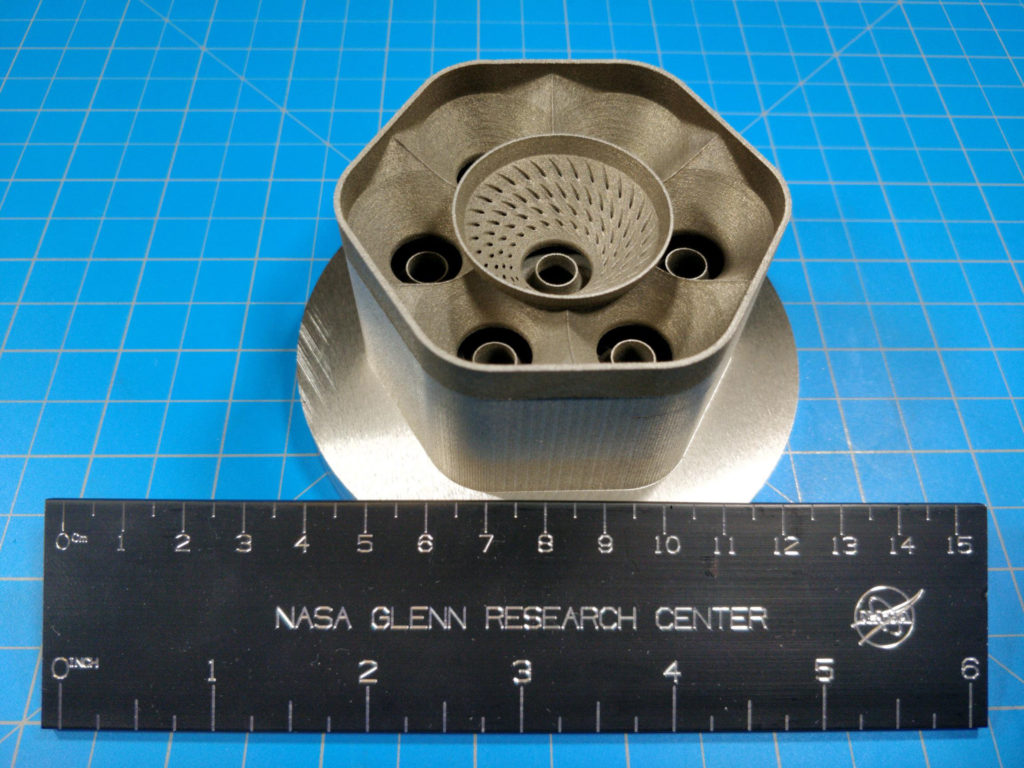Key to the function of proposed hypersonic vehicles, which have proven challenging to the U.S., are high-temperature materials, such as metals oxygen dispersion strengthened (ODS) metals and ceramics. ODS materials are able to withstand reentry forces and hypersonic speeds very well compared to other materials, making them important for space capsules, reusable rockets and hypersonic glide vehicles. But even beyond hypersonics, heat-resistant materials are key to rocket and jet engine performance, as running the engine hotter in order to gain fuel efficiency.
Therefore, it’s more than timely that NASA has released an ODS alloy it calls GRX-810 that can withstand temperatures over 1000°C. The malleable metal has been created for rocket and turbine engines, with applications in launch vehicles, ICBMs, missiles, commercial jet engines, hypersonics and much more. It also follows on from other groundbreaking work at NASA and its Jet Propulsion Laboratory, such as GRCo-84 copper alloy, for engines, as well.
NASA points out that GRX-810 has,
- ¨Twice the strength to resist fracturing
- Three and a half times the flexibility to stretch/bend prior to fracturing
- More than 1,000 times the durability under stress at high temperatures”

“The nanoscale oxide particles convey the incredible performance benefits of this alloy. This breakthrough is revolutionary for materials development. New types of stronger and more lightweight materials play a key role as NASA aims to change the future of flight. Previously, an increase in tensile strength usually lowered a material’s ability to stretch and bend before breaking, which is why our new alloy is remarkable,” said Dale Hopkins, deputy project manager of NASA’s Transformational Tools and Technologies project at NASA Glenn.
The news is doubly interesting for the additive manufacturing (AM) industry due to the fact that not only is the alloy an interesting candidate for 3D printing but it was created with AM, as well. NASA used 3D printing to “uniformly disperse nanoscale oxides throughout the alloy, which provides improved high-temperature properties and durable performance.”
Based on target calculations, this allows NASA to make GRX-810 in a manner that is lower cost and more controllable than normally possible. Traditionally, ball milling is used to make ODS materials. However, with 3D printing and methods like electrostatic deposition, it’s possible to design ODS feedstock that have a higher performance than those made with other methods. In effect, 3D printing can render these materials more versatile and make it easier for an engineer to design them as the engineer wishes them to be.
What’s more the agency was able to do this quickly. Hopkins said, “What used to take years through a trial-and-error process, now takes a matter of weeks or months to make discoveries.” In addition to 3D printing, what really accelerated NASA’s creation of GRX-810 was thermodynamic modeling, in which computational thermodynamics is used to model and predict energy systems, combustion, and the development of suitable alloys. This development has been underway for many decades now and NASA is sure to have used it extensively, as would other government agencies such as Sandia National Laboratory.
“Applying these two processes has drastically accelerated the rate of our materials development. We can now produce new materials faster and with better performance than before,” said NASA material scientist Tim Smith.
What NASA is demonstrating is a material that fulfills what a number of researchers have been dreaming about for a while now. What’s more, the agency could very well have come up with a method to develop many more tailored materials much more quickly than it has before.
3D printing again comes to the rescue in a key area of the hypersonics race: trying to develop the right materials for hypersonic glide vehicles, particular for engine and skin components. However, rather than just being a production technology, AM is acting as a materials discovery tool. 3D printing had previously been used to create unique microstructures and macrostructures, but now it can design the material itself before designing the structure and part later on. This could mean that AM could become a materials development platform and that the design of a precise material for a precise application could go much further than many of us thought that it would.
Subscribe to Our Email Newsletter
Stay up-to-date on all the latest news from the 3D printing industry and receive information and offers from third party vendors.
You May Also Like
3D Printing Financials: Fathom Struggles in Financial Quicksand During Critical Transition
Facing a year of key transitions and financial pressures, Fathom (Nasdaq: FTHM) has filed its annual report for 2023 with the U.S. Securities and Exchange Commission (SEC). The document outlines...
Latest Earnings Overview for Australian 3D Printing Firms Titomic and AML3D
Australian 3D printing manufacturing firms Titomic (ASX: TTT) and AML3D (ASX: AL3) reported their financial results for the period from July to December 2023, marking the first half of their...
3D Printing Webinar and Event Roundup: April 7, 2024
Webinars and events in the 3D printing industry are picking back up this week! Sea-Air-Space is coming to Maryland, and SAE International is sponsoring a 3D Systems webinar about 3D...
3D Printing Financials: Unpacking Farsoon and BLT’s 2023 Performance
In the Chinese 3D printing industry, two companies, Farsoon (SHA: 688433) and Bright Laser Technologies, or BLT (SHA: 688333), have recently unveiled their full-year earnings for 2023. Farsoon reported increases...































